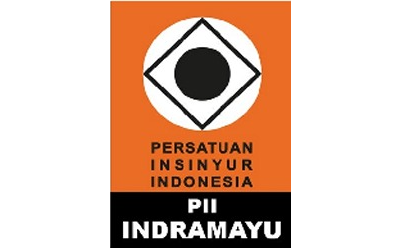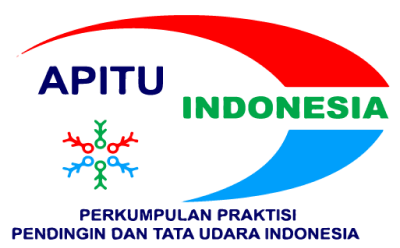SINTESIS DAN KARAKTERISASI KOMPOSIT FIBER SABUT KELAPA SAWIT DENGAN RESIN EPOKSI
Abstract
Full Text:
PDFReferences
Agarwal, R., Ramachandran, M., and Ratnam, S.J., 2015. “Tensile Properties of Reinforced Plastic Material Composites With Natural Fiber and Filler Material.” ARPN Journal of Engineering and Applied Sciences, Vol. 10, No. 5, pp. 2217–2220.
Benin, M.A., Ratnam, S.J., and Ramachandran, M., 2015. “Comparative Study of Tensile Properties on Thermoplastic & Thermosetting polymer composites.” International Journal of Applied Engineering, Vol. 10, No. 11, pp. 10109–10113.
Bodur, M.S., Bakkal, M., and Sonmez, H.E., 2016. “The Effects of Different Chemical Treatment Methods on The Mechanical and Thermal Properties of Textile Fiber Reinforced Polymer Composites.” Journal of Composite Materials, Vol. 50, No. 27, pp. 3817–3830.
Das, S., 2017. “Mechanical Properties of Waste Paper/Jute Fabric Reinforced Polyester Resin Matrix Hybrid Composites.” Carbohydrate Polymers, Vol. 172, pp. 60–67
Fragassa, C., 2017. Marine Applications of Natural Fibre-Reinforced Composites: A Manufacturing Case Study. in Advances in Applications of Industrial Biomaterials (pp. 21–47). 1st edition. Switzerland: Springer International Publishing
H. P. S, Abdul Khalil, Jawaid, M., and Abu Bakar, A., 2011. “Woven Hybrid Composites: Water Absorption and Thickness Swelling Behaviours.” Bioresources, Vol. 6, No. 2, pp. 1043–1052.
Huang, J.K., and Young, W.B., (2019). “The Mechanical, Hygral, and Interfacial Strength of Continuous Bamboo Fiber Reinforced Epoxy Composites.” Composites Part B: Engineering, Vol. 166, pp. 272–283.
Jordan, W., and Chester, P., 2017. “Improving the Properties of Banana Fiber Reinforced Polymeric Composites by Treating the Fibers.” Procedia Engineering, Vol. 200, pp. 283–289
Kakou, C.A., Arrakhiz, F.Z., Trokourey, A.., Bouhfid, R., Qaiss, A., and Rodrigue, D., 2014. “Influence of Coupling Agent Content on The Properties of High Density Polyethylene Composites Reinforced With Oil Palm Fibers”. Material & Design, Vol. 63, pp. 641–649.
Kumar, S., Deka, K., and Suresh P., 2016. “Mechanical Properties of Coconut Fiber Reinforced Epoxy Polymer Composites.” International Research Journal of Engineering and Technology, Vol. 3, No. 7, pp. 1334–1336.
Oushabi, A., Sair, S., Hassani, F.O., Abboud, Y., Tanane, O., and El Bouari, A., 2017. “The Effect of Alkali Treatment on Mechanical, Morphological and Thermal Properties of Date Palm Fibers (DPFs): Study of The Interface Of DPF-Polyurethane Composite.” South African Journal of Chemical Engineering, Vol. 23, pp. 116–123.
Ramachandran, M., Bansal, S., and Raichurkar P., 2016. “Experimental Study of Bamboo Using Banana and Linen Fibre Reinforced Polymeric Composites.” Perspectives in Science, Vol. 8, pp. 313–316.
Reddy, B.M., Reddy, Y.V.M., and Reddy, B.C.M., 2018. “Effect of Alkali Treatment on Mechanical, Water Absorption and Chemical Resistance Properties of Cordia-Dichotoma Fiber Reinforced Epoxy Composites.” International Journal of Applied Engineering Research, Vol. 13, No. 6, pp. 3709–3715.
Reddy, K.O., Maheswari, C.U., Reddy, K.R., Shukla, M., Muzenda, E., and Rajulu, A.V., 2015. “Effect of Chemical Treatment and Fiber Loading on Mechanical Properties of Borassus (Toddy Palm) Fiber/Epoxy Composites.” International Journal of Polymer Analysis and Characterization, Vol. 20, No. 7, pp. 612–626.
Sgriccia, N., Hawley, M. C., and Misra, M., 2008. “Characterization of Natural Fiber Surfaces and Natural Fiber Composites.” Composites Part A: Applied Science and Manufacturing, Vol. 39, No. 10, pp. 1632–1637.
Suryanto, H., Marsyahyo, E., Irawan, Y.S., and Soenoko, R., 2014. “Effect of Alkali Treatment on Crystalline Structure of Cellulose Fiber From Mendong (Fimbristylis globulosa) Straw.” Key Engineering Materials, Vol. 594, No. 720–724.
Sood, M., Deepak, D., and Gupta, V.K., 2018. “Tensile Properties of Sisal Fiber/Recycled Polyethylene (High Density) Composite: Effect of Fiber Chemical Treatment.” Materials Today, Vol. 5, No. 2, pp. 5673–5678.
Thakur, V.K, Singha, A.S, and Thakur, M.K., 2012. “Green Composites from Natural Fibers: Mechanical and Chemical Aging Properties.” International Journal of Polymer Analysis and Characterization, Vol. 17, No. 6, pp. 401-407.
Wong, K.J., Yousif, B.F., and Low, K.O., 2010. “Effects of Alkali Treatment on The Interfacial Adhesion of Bamboo Fibres.” Journal of Materials: Design and Applications, Vol. 224, No. 3, pp. 139–148.
Yan, L., Chouw, N., and Jayaraman, K., 2014. “Flax Fibre and Its Composites–A Review.” Composites Part B: Engineering, Vol. 56, pp. 296–317.
DOI: https://doi.org/10.31884/jtt.v6i1.240
Refbacks
- There are currently no refbacks.
Copyright (c) 2020 JTT (Jurnal Teknologi Terapan)

This work is licensed under a Creative Commons Attribution-NonCommercial-NoDerivatives 4.0 International License.
 Creative Common Attribution-ShareAlike 4.0 International (CC BY-SA 4.0)
Creative Common Attribution-ShareAlike 4.0 International (CC BY-SA 4.0)













